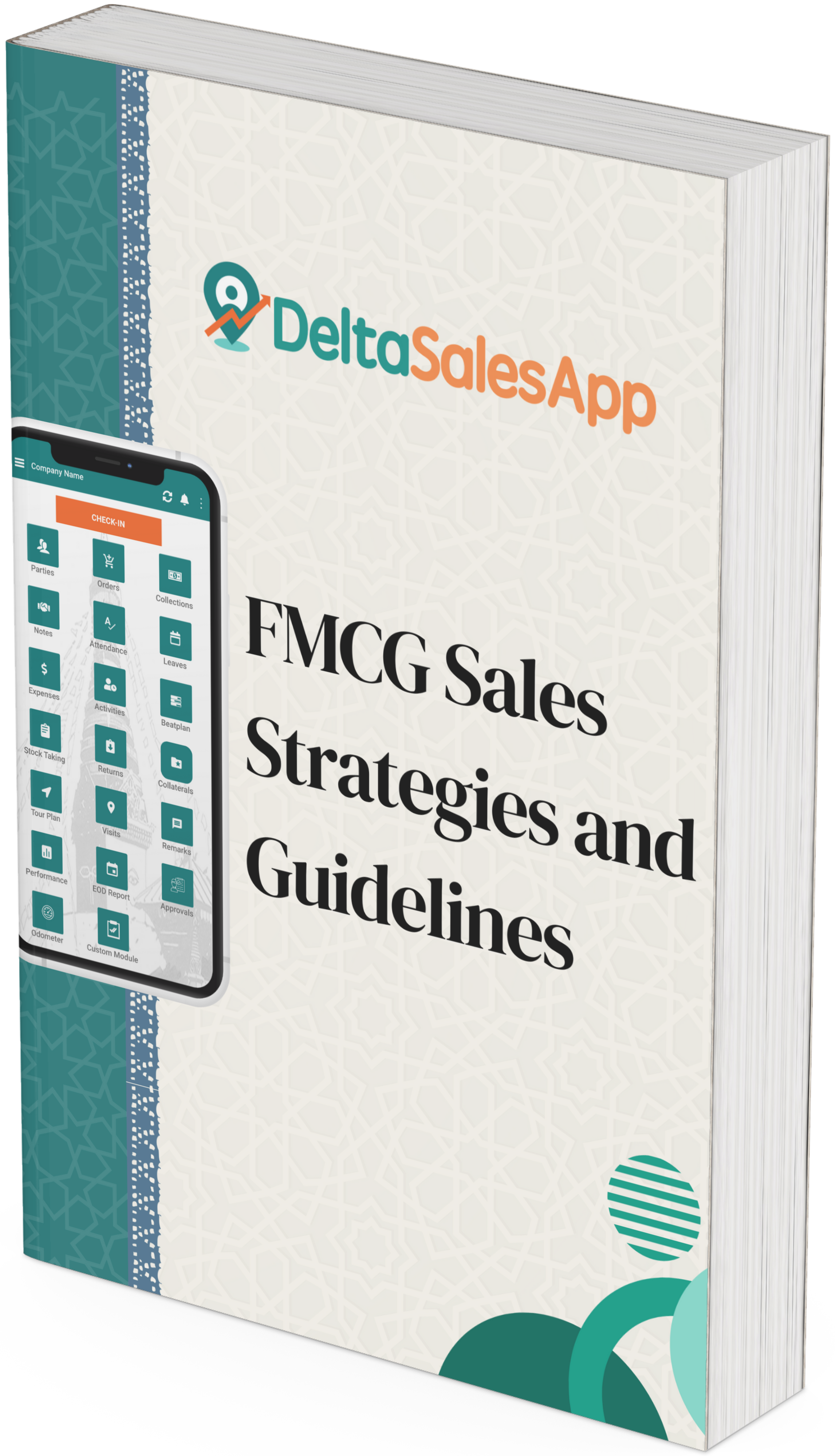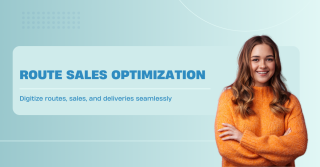How Retail Execution Data Boosts CPG Sales
_1747555891.webp)
In today’s fast-paced Consumer Packaged Goods (CPG) marketplace, retail execution is far more than simply placing products on shelves. It’s about crafting a seamless, data-driven process that ensures your brand not only secures shelf space but also maximizes its potential to drive sales growth and build lasting retailer relationships. The backbone of this success lies in three essential types of data: Activity Data, Observational Data, and Sales Data.
Together, these data pillars empower field sales teams to optimize their performance, enhance merchandising excellence, and execute promotions with precision—turning retail execution into a competitive advantage that fuels sustained growth. With the help of modern tools like a Field Sales App, CPG companies can now streamline this process and gain real-time visibility into every store visit.
Expanding Your In-Store Footprint with Activity Data
Activity Data captures the real-world actions of your sales reps in the field. Tracking visit frequency, duration, and territory coverage provides the foundation for effective retail execution. When brands know exactly where their reps are and how much time they spend in each store, they can:
Build Trust with Retailers: Consistent visits prove commitment to store managers and buyers, reinforcing reliability and encouraging them to grant more shelf space or premium placements.
Optimize Scheduling Around Key Events: Coordinating visits around promotional launches or restocking ensures reps arrive when their presence is most impactful.
Demonstrate Territory Coverage to Chains: Chains often demand proof that all locations receive attention, and activity data provides transparent reporting to meet these requirements.
For example, a beverage brand that tracks reps’ store visit times can identify under-served locations, reallocating resources to ensure no opportunity is missed. This type of data-driven scheduling improves efficiency and prevents rep burnout by optimizing routes and workloads.
Leveraging Observational Data to Achieve Merchandising Excellence
While activity data tells you where reps are and when, observational data reveals what’s happening on the shelves. This includes photos of displays, shelf audits, and detailed notes about store conditions and shopper behaviors. Integrating observational insights into your retail execution strategy enables brands to:
Spot Opportunities for Secondary Placements: Feedback from store managers and shopper interactions can reveal unmet demand, allowing field teams to pitch additional facings or new locations for your products.
Provide Visual Proof of Success: Photographic evidence of high-performing displays serves as a powerful tool for replicating winning merchandising tactics across other stores.
Identify Problems Early: Missing signage, damaged displays, or poor lighting can be detected quickly, enabling rapid corrective actions that prevent sales losses.
For instance, a snack company using shelf photos might discover competitor products encroaching on their space due to faded signage. Armed with this observational data, the team can implement focused merchandising improvements, boosting brand visibility and sales.
Using Sales Data to Drive Smarter Retail Execution
Ultimately, the goal of retail execution is to drive sales growth—and that’s where sales data comes in. Access to store-level POS (point-of-sale) data enables brands to:
Justify Additional Facings: When sales data shows strong SKU performance, reps have data-backed proof to negotiate for more shelf space.
Identify Stockouts and Lost Sales: Sudden drops in sales may signal out-of-stock issues or lost placements, alerting teams to intervene before customers switch brands.
Track New Product Success: Sales trends help reps prioritize high-potential SKUs and phase out underperformers, optimizing inventory and merchandising strategies.
Sales performance analytics transform retail execution from guesswork to a precise science. For example, a personal care brand analyzing SKU-level data might uncover that a promotional bundle is cannibalizing single-item sales. This insight allows them to adjust their marketing approach to maximize overall revenue.
Why Integrating All Three Data Types Matters
Separately, activity data, observational data, and sales data offer valuable insights. But when combined through a unified Sales Management Platform, they provide a holistic view that empowers teams to act with confidence and agility. This integration enables:
Smarter visit planning that aligns with sales trends and merchandising conditions.
Faster identification of issues and opportunities through correlated data points.
Stronger retailer partnerships built on transparency and consistent performance.
For example, by linking observational data (photos of a display) with sales data (spike in SKU sales), brands can prove which merchandising tactics truly drive results—helping scale successful strategies across regions.
Final Thoughts: Elevate Your Retail Execution with Data-Driven Insights
In the battle for retail shelf space and consumer attention, data is your strongest weapon. Leveraging activity data, observational data, and sales data empowers CPG brands to execute smarter, respond faster, and grow sales more effectively.
By adopting a retail execution platform that unites these data types, your field sales teams can achieve higher levels of merchandising excellence, optimize their routes and efforts, and build stronger relationships with retailers. The result? A robust, scalable retail footprint that consistently delivers measurable sales performance gains.
Are you ready to transform your retail execution with actionable insights and data-driven strategies? Start integrating your field sales data, observational audits, and sales analytics today to unlock new growth opportunities and elevate your brand in every store.
Frequently Asked Questions (FAQ)
1. What is retail execution in the CPG industry?
Retail execution refers to how well a CPG brand carries out its in-store strategy, including product placement, merchandising, promotional displays, and shelf availability. Effective retail execution ensures your products are visible, available, and aligned with promotional efforts—leading to higher sales and better customer experiences.
2. Why is data important for retail execution?
Data is the foundation of smart retail execution. It helps field sales teams understand where to focus their efforts, how stores are performing, and what changes need to be made. Activity data, observational data, and sales data provide the insights needed to optimize store visits, correct merchandising issues, and boost sales performance.
3. What is activity data in field sales?
Activity data includes metrics related to field reps’ visits—such as frequency, duration, locations visited, and tasks completed. This data helps managers track rep productivity, plan smarter routes, and ensure all key accounts are properly serviced.
4. How does observational data improve store performance?
Observational data involves capturing on-the-ground conditions through photos, notes, and audits. It helps identify issues like poor shelf placement, missing signage, or competitor activity—so brands can quickly adjust and maintain high merchandising standards.
5. What role does sales data play in retail execution?
Sales data provides visibility into what’s actually selling at each location. It reveals top-performing SKUs, highlights stockouts, and shows the effectiveness of promotions. This allows teams to make informed decisions about restocking, displays, and future campaigns.
Explore more
👉What’s Keeping CPG Teams Awake? Retail Execution 2025
👉CPG Data Analytics: A Complete Guide to Smarter Sales
Pro Tip
Ready to transform your sales strategy? Implementing a modern retail execution approach is essential in today’s competitive market
⭐ Delta Sales App on FirmSuggest









